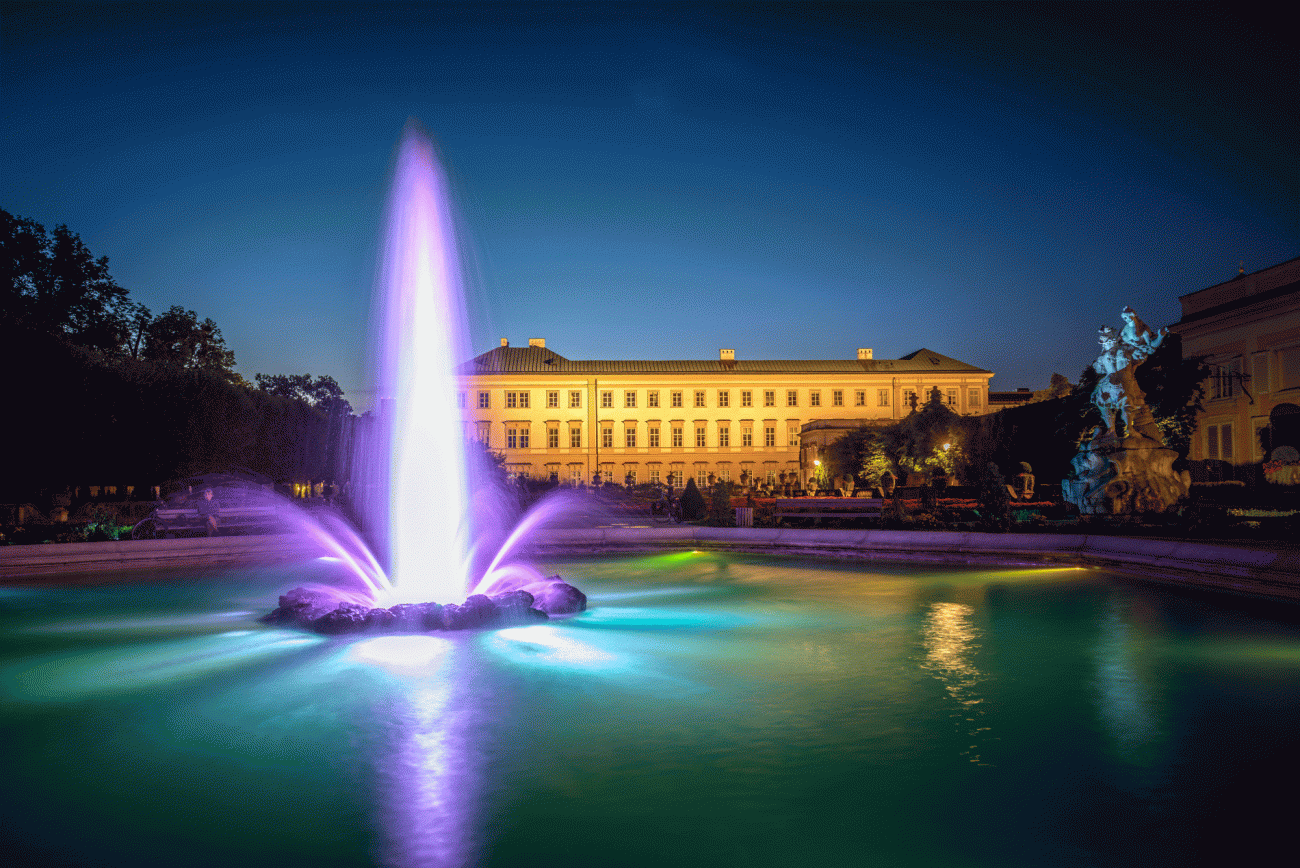Places you really need to visit!
Let us take you on a short stroll through Salzburg and introduce you to some of the top sightseeing attractions.
Narrow streets and wide squares – here you can feel the whole story of the Prince Archbishops and Wolfgang Amadeus Mozart. This city knows how to inspire again and again. Visitors and locals alike move between the UNESCO World Heritage Site with the Hohensalzburg Fortress, Getreidegasse or Hellbrunn and the festival hype in summer and the enchanting Christmas market in winter.
Hohensalzburg Fortress – the emblem of Salzburg

This impressive castle has dominated the city’s skyline for hundreds of years. The fortress can be easily reached on foot but also by means of the funicular railway. Once on top, you have a wonderful 360-degree view of the city and its surroundings.
Archbishop Gebhard originally commissioned the building of a defensive work in 1077 and in the course of the centuries, an extensive fortress complex developed. Its present appearance is mainly due to the work undertaken around 1500 under Prince-Archbishop Leonhard von Keutschach.
To learn more about the fortress and its history, you can visit the various museums in the fortress or join one of the guided tours.
Mirabell Palace and Gardens

Mirabell Palace was built in 1606 by Prince-Archbishop Wolf Dietrich for his mistress, Simone Alt, with whom he had eight children! The famous Marble Hall here now serves as a romantic setting for weddings. The wonderful gardens that include an orangerie, a rose garden and themed gardens – a dwarf garden and theatre garden – and the seasonally changing blooms provide the perfect location to linger, saunter and take photographs. You’ll certainly be impressed by the view of the fortress and the old town.
Getreidegasse

Getreidegasse in the old town is perhaps the most famous street in Salzburg – Mozart was born here in the house at No. 9. And it’s a shopper’s paradise – international retail businesses have outlets here in the historical buildings, many of which have ornamental guild signs protruding from their facades.
Adding to the charm are traditional buildings, old inns steeped in history and the so-called ‘through’ houses, in which the front and back of the buildings let directly out onto different streets, with an arcaded passageway connecting the two.
Mozarts Geburtshaus

Wolfgang Amadeus Mozart was born on 27 January 1756 in the ‘Hagenauer Haus’ – now No. 9 Getreidegasse.
The Mozart family had been living in an apartment on the third floor since 1747. It was there that the wunderkind spent his early childhood and youth with his sister Anna Maria (known as ‘Nannerl’) and his parents, Leopold and Anna Maria. Father Leopold, Deputy Kapellmeister and ‘court and chamber composer’ was the teacher, promoter and travelling companion of his gifted son.
Mozart’s Birthplace is today one of the most frequently visited museums in Austria. It was the International Mozarteum Foundation which first opened a museum in the house in 1880. Here you can view the original rooms, furnished with authentic items from the period.
Schloss Hellbrunn und Wasserspiele

Prince-Archbishop Mark Sittich summoned the Baroque master architect Santino Solari to Salzburg to design for him his country seat, the pleasure palace Hellbrunn with its extensive grounds and world-famous fountains.
The ‘trick’ fountains are a must-see, although the more inattentive visitor may find themselves getting wet.
The opportunity of a guided tour through the palace, a visit to the orangerie and a stroll through the park – some of which is natural biotope with meadows, ponds and hills while other parts have been delightfully landscaped – make a trip to Hellbrunn a very special experience.
Salzburger Dom

Salzburg has many churches but the cathedral is the most pre-eminent religious structure and the heart of Salzburg itself. With its mighty dome and two towers, it dominates the old town, surrounded by three monumental piazzas – Residenzplatz square, Domplatz square and Kapitelplatz square.
The very first cathedral was built in 767 under Bishop Virgil. Following a fire in 1598, the cathedral was given its current form by Prince-Archbishop Wolf Dietrich. During Prince-Archbishop Mark Sittich it was completed in its early Baroque grandeur by Santino Solari.
You might also be interested in:
A world of culture, art, and festivals – 100 years of the Salzburg Festival
